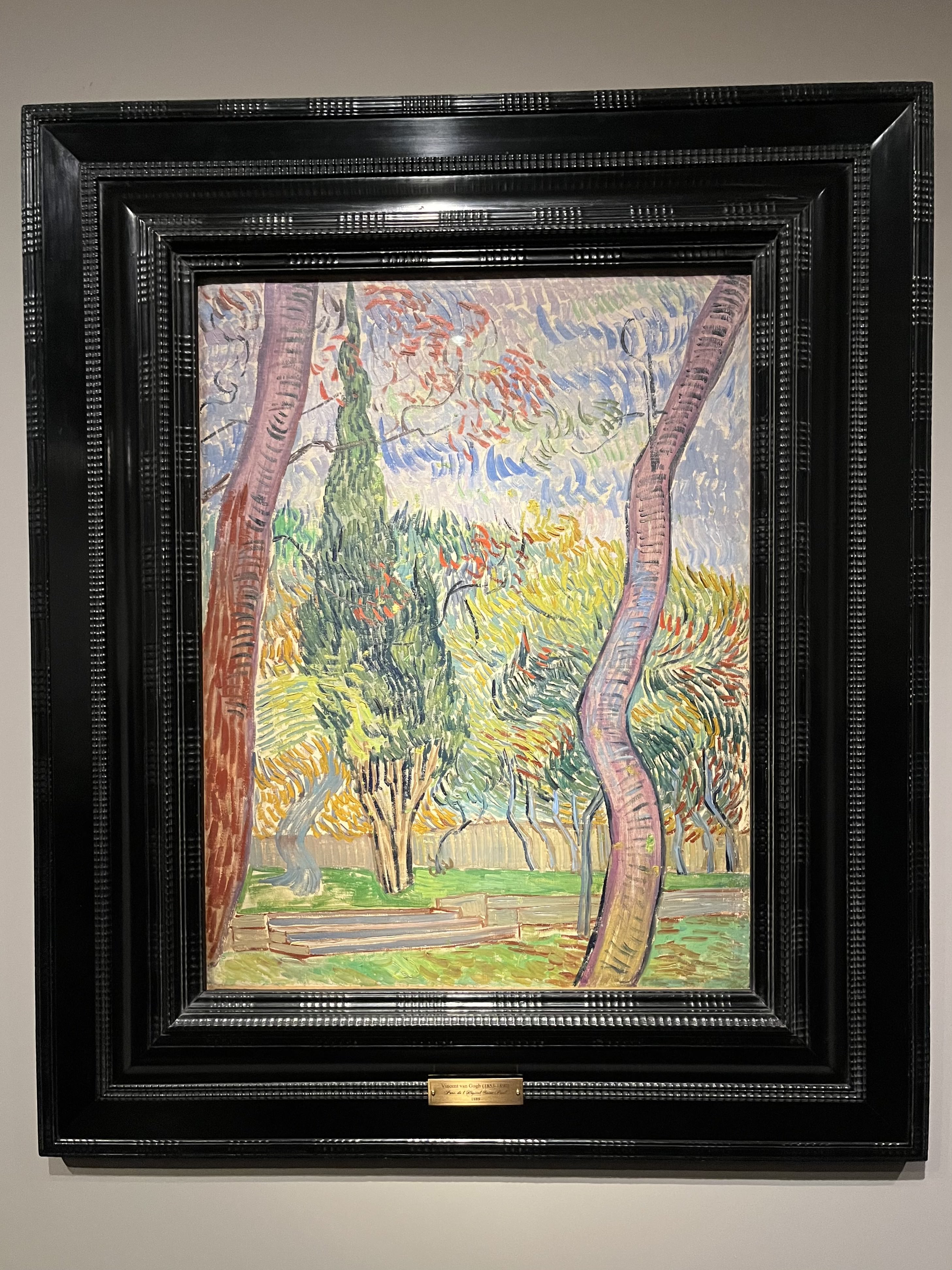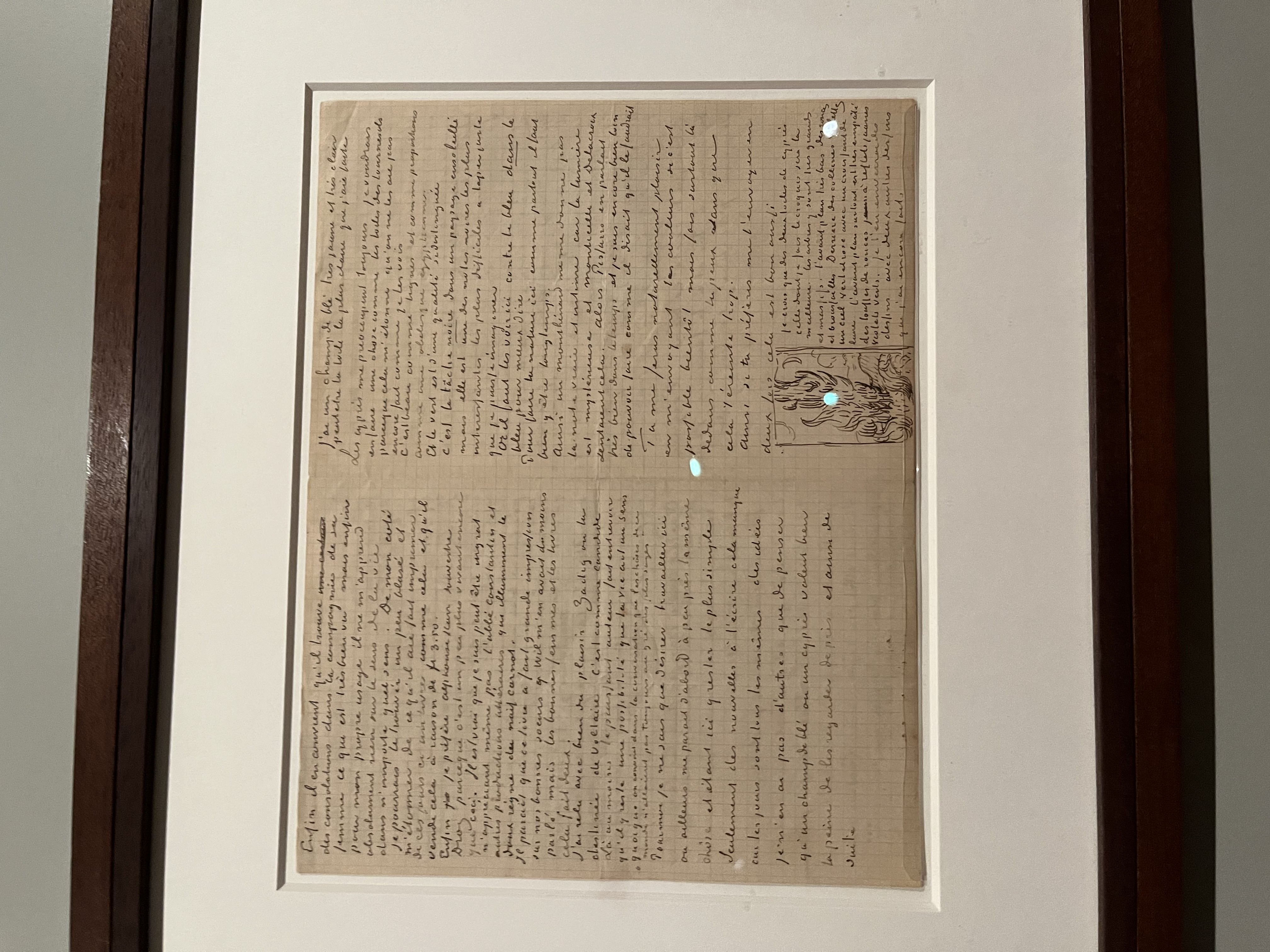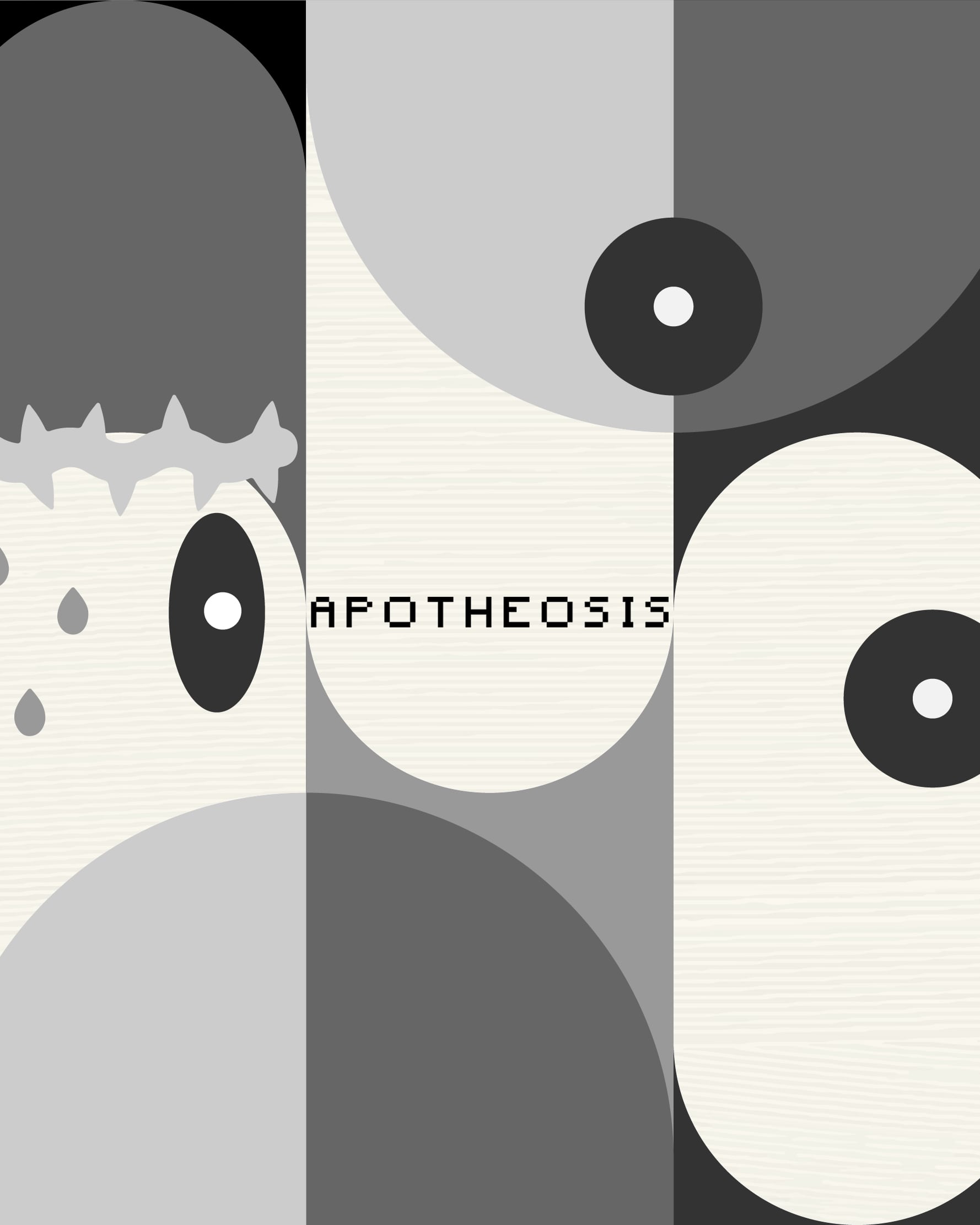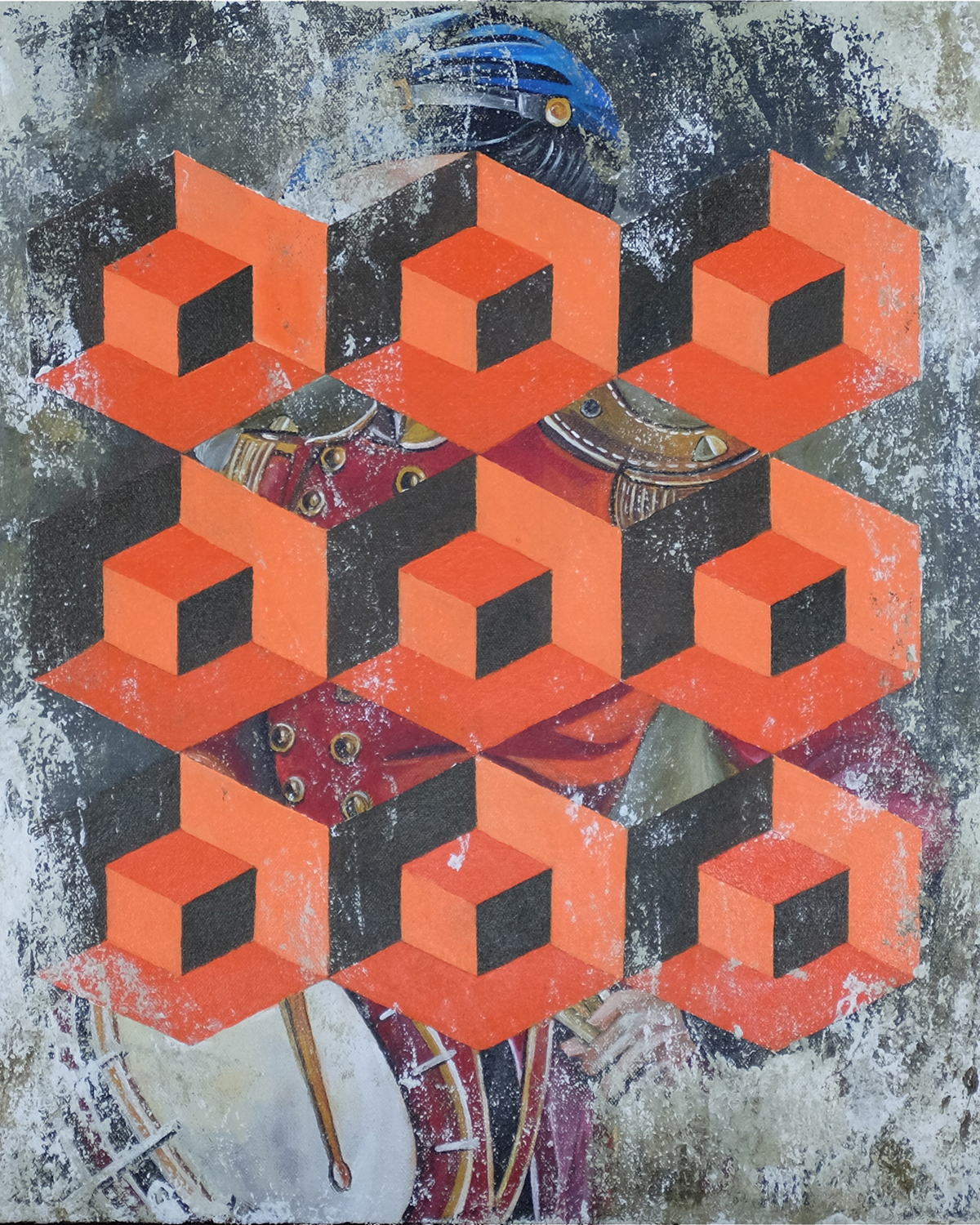Van Gogh's Cypresses at The Met
Published October 16, 2023
“I want to touch people with my art. I want them to say 'he feels deeply, he feels tenderly'.” -Vincent Van Gogh
And man, did his art not only touch us, no. They pierced us single-handedly like a dagger through the heart—a supernova brilliantly bursting with light inside our weary souls, rendering us to a state of absolute reverence. While we were completely blown to smithereens, we had, in good conscience, the ability to move quickly and take some fairly good (yet askew) photos of all 44 works. It was quite a feat to stay still and gaze at the paintings at our own pace as many viewers wanted their share of selfies with Van Gogh’s arboreal masterpieces.
As if in a dream, the rooms were filled with abstract whispers of awe and academic chatter. Towering, swirling trees dotted Van Gogh’s frenetic landscapes. His cypresses contorted like gods in a battle, waving with gestures of their gnarled menacing arms with the tragic soaring of their green manes. His skies, schizophrenic, often exploding with either pastel shades of light or glorious billows of clouds. Yet, underneath the heavenly vastness that he painted, serene depictions of nature at rest allow the eye to take in the paradox of life in this symbolism. The painter was searching for a mystical antidote to his lifelong battle with depression. However, with his impression of the cypresses, in their indomitable power and dignity, in their musculature, with saps thick and warm and a stance that defied hurricanes, it seems that Van Gogh relished moments where he conquered the nightmarish silhouettes that plagued his dreams.
While seeing Van Gogh’s cypresses was a refreshing encounter, nothing compares to the experience of seeing the splendor that is “The Starry Night”, which is a crossloan from the Museum of Modern Art (MoMa). According to The Met, The Starry Night’s cypress tree, which dominates the left side of the canvas, is crucial to giving the painting its modern feel and intense emotional impact. It’s true, witnessing this in person while taking a closer look, where the tree is perched like a vortex in the sky, contrasting with a more vertical dynamic, ultimately revealing an image of a night sky and an inner self.
Among the documentation offered by the exhibit is a letter to Van Gogh’s brother Theo. Penned shortly after Van Gogh’s arrival in Arles, we see the artist virtually prophesizing the major work to come. “I need a starry night with cypresses— or perhaps above a field of ripe wheat”, Van Gogh writes. The letters between the brothers, which actually played a significant factor in Van Gogh’s artistic and personal life, is the exhibition’s most touching aspect. It’s almost as if we were reading the letter like it was addressed to us from the artist himself as he describes what he’s seeing out of his window. How powerful to see how it moves from an idea to words, to sketching in a letter, to a drawing, then finally to a painting. We couldn’t help but wonder, with all the sadness and turmoil that stirred within the painter’s mind and heart, how he chose to see beauty instead of chaos, light instead of darkness, hope instead of despair, and an eternity of stars above a sleepy town that embraced broken hearts, including his.
“Van Gogh’s Cypresses” is arranged meticulously across three galleries in The Metropolitan Museum of Art (The Met). True to its exhibition name, it showcased Van Gogh’s deep fascination with the cypress tree and among its holdings are “The Starry Night”, “Country Road in Provence by Night”, and The Met’s own “Wheat Field with Cypresses”. It is history in the making as it is the first ever exhibition to highly focus on Van Gogh’s cypress trees, reuniting some of his most iconic paintings and other rarely lent works.
“Van Gogh’s Cypresses”
May 22–August 27, 2023
The Met, New York City




















































































